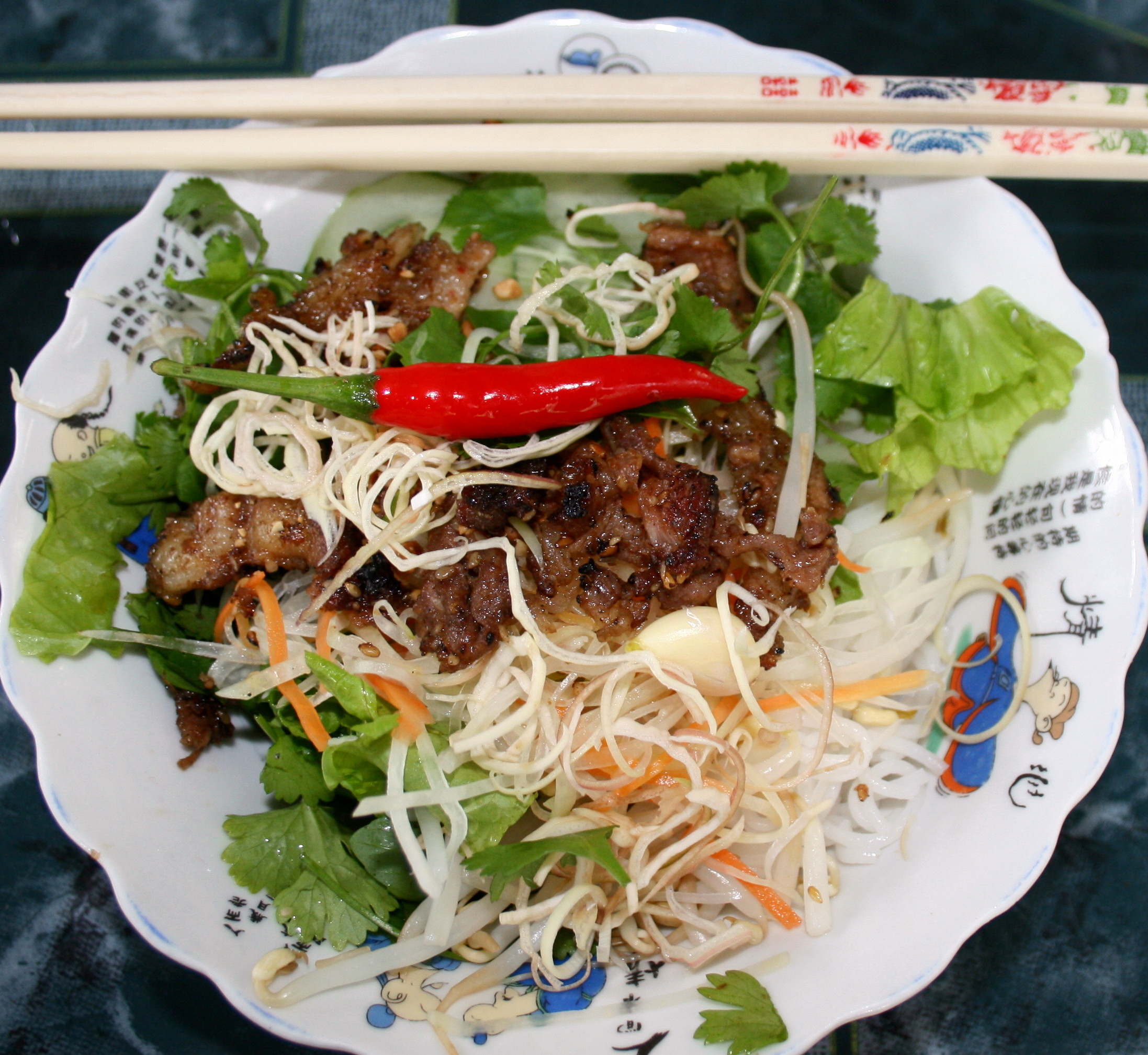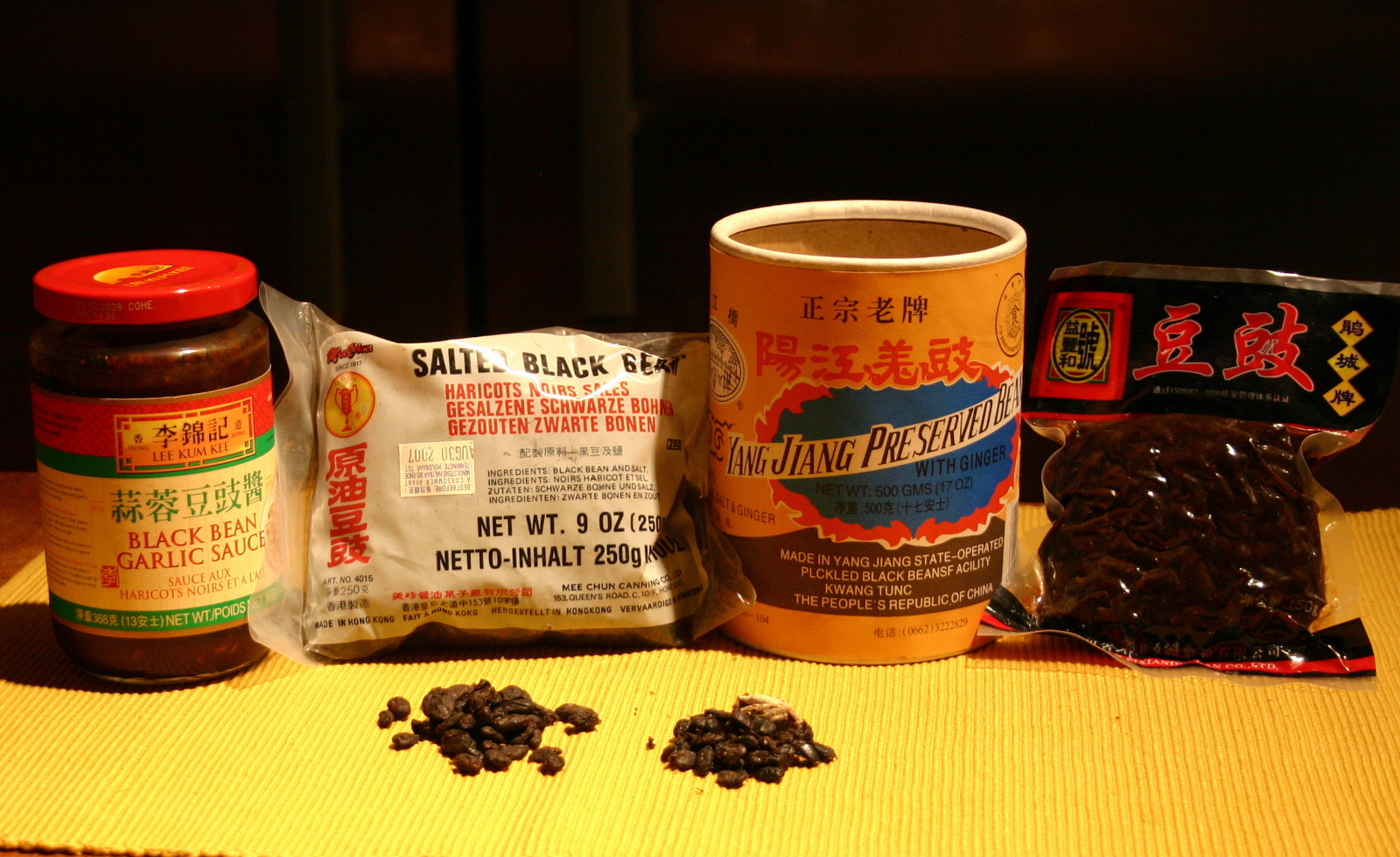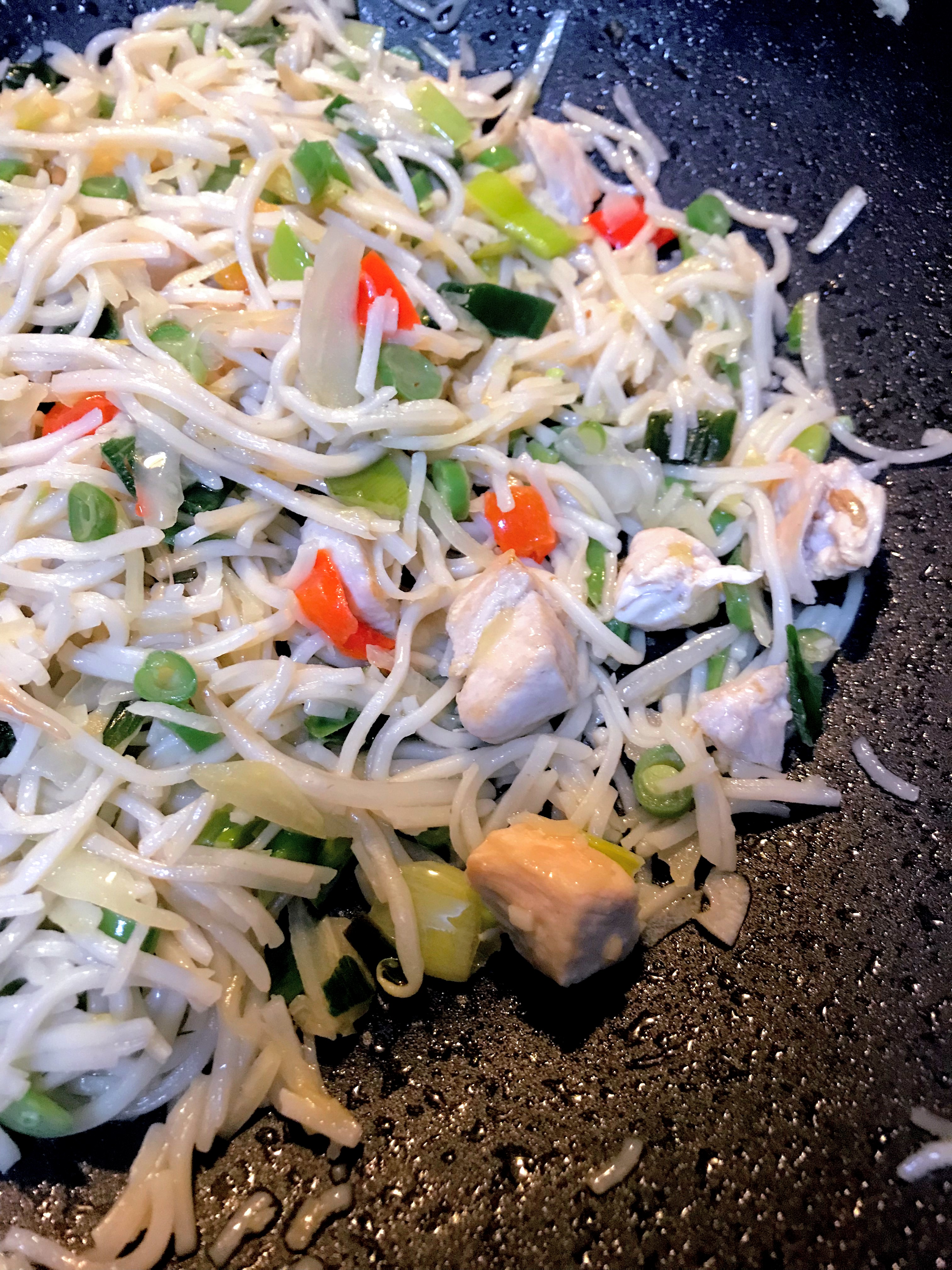|
Laoyou Rice Noodles
Laoyou rice noodles (), which translates as "old friend rice noodles", also referred to as "ol' buddy noodles", is a local noodle dish local to Nanning, China. It is made of fried pepper, sour bamboo shoots, black beans, garlic, pork, soup and rice noodles. Legend In the 1930s, an old man in Nanning used to visit a tea house every day. But once, he did not show up for many days due to the flu. When the tea house owner heard about it, he prepared a bowl of hot noodles for the old man with pickled bamboo shoots, chili, fermented soya beans, and crushed garlic. The sour and spicy noodles helped the old man recover fast. The old man was grateful to the tea house owner and later sent him a plaque reading "old friend frequent." According to the story, this is how laoyou noodles, also known as "old friend noodles" or "old buddy noodles", got its name. Since the people of Nanning love eating rice noodles, the dish gradually became laoyou rice noodles. See also * Rice noodles Ri ... [...More Info...] [...Related Items...] OR: [Wikipedia] [Google] [Baidu] |
Noodle
Noodles are a type of food made from unleavened dough which is either rolled flat and cut, stretched, or extruded, into long strips or strings. Noodles are a staple food in many cultures (for example, Chinese noodles, Filipino noodles, Indonesian noodles, Japanese noodles, Korean noodles, Vietnamese noodles, and Italian pasta) and made into a variety of shapes. While long, thin strips may be the most common, many varieties of noodles are cut into waves, helices, tubes, strings, or shells, or folded over, or cut into other shapes. Noodles are usually cooked in boiling water, sometimes with cooking oil or salt added. They are often pan-fried or deep-fried. Noodles are often served with an accompanying sauce or in a soup. Noodles can be refrigerated for short-term storage or dried and stored for future use. Etymology The word for noodles in English, was borrowed in the 18th century from the German word ''Nudel''. History Origin The earliest written record of noodles is fou ... [...More Info...] [...Related Items...] OR: [Wikipedia] [Google] [Baidu] |
Nanning
Nanning (; ; za, Namzningz) is the capital and largest city by population of the Guangxi Zhuang Autonomous Region in Southern China. It is known as the "Green City" because of its abundance of lush subtropical foliage. Located in the South of Guangxi, Nanning is surrounded by a hilly basin, with a warm, monsoon-influenced humid subtropical climate. Beginning in 1949, Nanning's economy began developing beyond its former role as essentially a commercial and administrative centre, as it underwent sustained industrial growth. Today, Nanning is considered the economic, financial and cultural center of Guangxi, and the chief centre for the training of the Zhuang minority in Guangxi. The People's Park is located in the center of the city. The city is home to several notable universities, including Guangxi University, Guangxi Medical University, Guangxi University for Nationalities and Guangxi Arts University. History Nanning, an ancient city with a long history and rich culture ... [...More Info...] [...Related Items...] OR: [Wikipedia] [Google] [Baidu] |
China
China, officially the People's Republic of China (PRC), is a country in East Asia. It is the world's most populous country, with a population exceeding 1.4 billion, slightly ahead of India. China spans the equivalent of five time zones and borders fourteen countries by land, the most of any country in the world, tied with Russia. Covering an area of approximately , it is the world's third largest country by total land area. The country consists of 22 provinces, five autonomous regions, four municipalities, and two Special Administrative Regions (Hong Kong and Macau). The national capital is Beijing, and the most populous city and financial center is Shanghai. Modern Chinese trace their origins to a cradle of civilization in the fertile basin of the Yellow River in the North China Plain. The semi-legendary Xia dynasty in the 21st century BCE and the well-attested Shang and Zhou dynasties developed a bureaucratic political system to serve hereditary monarchies, or dyna ... [...More Info...] [...Related Items...] OR: [Wikipedia] [Google] [Baidu] |
Bell Pepper
The bell pepper (also known as paprika, sweet pepper, pepper, or capsicum ) is the fruit of plants in the Grossum Group of the species ''Capsicum annuum''. Cultivars of the plant produce fruits in different colors, including red, yellow, orange, green, white, chocolate, candy cane striped, and purple. Bell peppers are sometimes grouped with less pungent chili varieties as "sweet peppers". While they are fruits—botanically classified as berries—they are commonly used as a vegetable ingredient or side dish. Other varieties of the genus ''Capsicum'' are categorized as ''chili peppers'' when they are cultivated for their pungency, including some varieties of ''Capsicum annuum''. Peppers are native to Mexico, Central America, and northern South America. Pepper seeds were imported to Spain in 1493 and then spread through Europe and Asia. The mild bell pepper cultivar was developed in the 1920s, in Szeged, Hungary. Preferred growing conditions for bell peppers include warm, mois ... [...More Info...] [...Related Items...] OR: [Wikipedia] [Google] [Baidu] |
Bamboo Shoots
Bamboo shoots or bamboo sprouts are the edible shoots (new bamboo culms that come out of the ground) of many bamboo species including ''Bambusa vulgaris'' and ''Phyllostachys edulis''. They are used as vegetables in numerous Asian dishes and broths. They are sold in various processed shapes, and are available in fresh, dried, and canned versions. Raw bamboo shoots contain cyanogenic glycosides, natural toxins also contained in cassava. The toxins must be destroyed by thorough cooking and for this reason fresh bamboo shoots are boiled before being used in other ways. The toxins are also destroyed in the canning process. Harvested species Most young shoots of bamboo are edible after being boiled to remove toxins, but only around a hundred or so species are harvested regularly for edible shoots. These are usually from species that are also cultivated for other uses. These include: *'' Acidosasa'' – native to South China and Vietnam :*'' Acidosasa edulis'' – endemic to the ... [...More Info...] [...Related Items...] OR: [Wikipedia] [Google] [Baidu] |
Douchi
''Douchi'' () or ''tochi'' (also known as fermented black soybeans, Chinese fermented black beans (), salted black beans, salty black beans, or just black beans) is a type of fermented and salted black soybean most popular in the cuisine of China, where they are most widely used for making black bean sauce dishes. Shurtleff, W.; Aoyagi, History of Fermented Black Soybeans (165 B.C. to 2011) Lafayette, California: Soyinfo Center, 2011 ''Douchi'' is made by fermenting and salting black soybeans. The black type soybean is most commonly used and the process turns the beans soft, and mostly semi-dry (if the beans are allowed to dry). Regular soybeans (white soybeans) are also used, but this does not produce "salted black beans"; instead, these beans become brown. The smell is sharp, pungent, and spicy; the taste is salty, somewhat bitter and sweet. The product made with white soybeans is called ''mianchi''. ''Douchi'', "Chinese salted black beans", and "black soybeans" are n ... [...More Info...] [...Related Items...] OR: [Wikipedia] [Google] [Baidu] |
Garlic
Garlic (''Allium sativum'') is a species of bulbous flowering plant in the genus ''Allium''. Its close relatives include the onion, shallot, leek, chive, Allium fistulosum, Welsh onion and Allium chinense, Chinese onion. It is native to South Asia, Central Asia and northeastern Iran and has long been used as a seasoning worldwide, with a history of several thousand years of human consumption and use. It was known to ancient Egyptians and has been used as both a food flavoring and a traditional medicine. China produces 76% of the world's supply of garlic. Etymology The word ''garlic'' derives from Old English, ''garlēac'', meaning ''gar'' (spear) and leek, as a 'spear-shaped leek'. Description ''Allium sativum'' is a perennial flowering plant growing from a bulb. It has a tall, erect flowering stem that grows up to . The leaf blade is flat, linear, solid, and approximately wide, with an acute apex. The plant may produce pink to purple flowers from July to September in the Nort ... [...More Info...] [...Related Items...] OR: [Wikipedia] [Google] [Baidu] |
Pork
Pork is the culinary name for the meat of the domestic pig (''Sus domesticus''). It is the most commonly consumed meat worldwide, with evidence of pig husbandry dating back to 5000 BCE. Pork is eaten both freshly cooked and preserved; curing extends the shelf life of pork products. Ham, gammon, bacon, and sausage are examples of preserved pork. Charcuterie is the branch of cooking devoted to prepared meat products, many from pork. Pork is the most popular meat in the Western world, particularly in Central Europe. It is also very popular in East and Southeast Asia ( Mainland Southeast Asia, Philippines, Singapore, and East Timor). The meat is highly prized in Asian cuisines, especially in Mainland China, for its fat content and texture. Some religions and cultures prohibit pork consumption, notably Islam and Judaism. History Pigs were domesticated in Mesopotamia around 13,000 BC. Charcuterie is the branch of cooking devoted to prepared meat products such as ... [...More Info...] [...Related Items...] OR: [Wikipedia] [Google] [Baidu] |
Rice Noodles
Rice noodles, or simply rice noodle, are noodles made with rice flour and water as the principal ingredients. Sometimes ingredients such as tapioca or corn starch are added in order to improve the transparency or increase the gelatinous and chewy texture of the noodles. Rice noodles are most common in the cuisines of East and Southeast Asia. They are available fresh, frozen, or dried, in various shapes, thicknesses and textures. Fresh noodles are also highly perishable; their shelf life may be just several days. History The origin of rice noodles dates back to China during the Qin dynasty when people from northern China invaded the south. Due to climatic conditions, the northern Chinese have traditionally preferred wheat and millet which grew in cold weather while the southern Chinese preferred rice which grew in hot weather. Noodles are traditionally made out of wheat and eaten throughout northern China so to adapt, northern cooks tried to prepare "noodles" using rice, thus inv ... [...More Info...] [...Related Items...] OR: [Wikipedia] [Google] [Baidu] |
Rice Noodles
Rice noodles, or simply rice noodle, are noodles made with rice flour and water as the principal ingredients. Sometimes ingredients such as tapioca or corn starch are added in order to improve the transparency or increase the gelatinous and chewy texture of the noodles. Rice noodles are most common in the cuisines of East and Southeast Asia. They are available fresh, frozen, or dried, in various shapes, thicknesses and textures. Fresh noodles are also highly perishable; their shelf life may be just several days. History The origin of rice noodles dates back to China during the Qin dynasty when people from northern China invaded the south. Due to climatic conditions, the northern Chinese have traditionally preferred wheat and millet which grew in cold weather while the southern Chinese preferred rice which grew in hot weather. Noodles are traditionally made out of wheat and eaten throughout northern China so to adapt, northern cooks tried to prepare "noodles" using rice, thus inv ... [...More Info...] [...Related Items...] OR: [Wikipedia] [Google] [Baidu] |
Chinese Noodle Dishes
Chinese can refer to: * Something related to China * Chinese people, people of Chinese nationality, citizenship, and/or ethnicity **''Zhonghua minzu'', the supra-ethnic concept of the Chinese nation ** List of ethnic groups in China, people of various ethnicities in contemporary China ** Han Chinese, the largest ethnic group in the world and the majority ethnic group in Mainland China, Hong Kong, Macau, Taiwan, and Singapore ** Ethnic minorities in China, people of non-Han Chinese ethnicities in modern China ** Ethnic groups in Chinese history, people of various ethnicities in historical China ** Nationals of the People's Republic of China ** Nationals of the Republic of China ** Overseas Chinese, Chinese people residing outside the territories of Mainland China, Hong Kong, Macau, and Taiwan * Sinitic languages, the major branch of the Sino-Tibetan language family ** Chinese language, a group of related languages spoken predominantly in China, sharing a written script (Chine ... [...More Info...] [...Related Items...] OR: [Wikipedia] [Google] [Baidu] |
.jpg)







